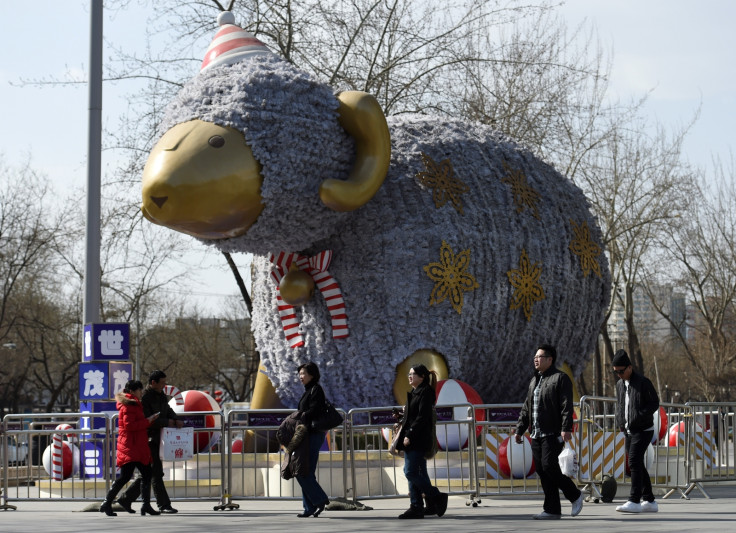Chinese New Year 2015: Top 20 fun facts about the Year of the Goat

The Chinese New Year begins on 19 February, the first day of the first Chinese lunar month. This year will be the Year of the Goat.
As per the Chinese zodiac, Sheng Xiao, each year of the 12-year-cycle is attached to a different animal.
People celebrate the Lunar New Year with much fun and fervour. There are colourful parades, sumptuous food, and most importantly families reunite to spend the special day together.
According to popular Chinese sayings, the New Year brings good luck, money, prosperity and longevity.
There are numerous fun and interesting facts attached to the popular festival.
IBTimes UK has compiled a list of top fun facts to celebrate the Year of the Goat.
1. The Chinese New Year is celebrated for 15 days, with each day holding a separate meaning.
2. Though the festival is fast becoming a global phenomenon, Hong Kong, Taiwan, Singapore, Indonesia and the Philippines are a few countries which commemorate it with as much enthusiasm as any Chinese city.
3. Ancient Chinese followed the lunar calendar which originated in 2600 BC. There is no exact date for the New Year and it changes each year.
4. The second day of the New Year celebration is believed to be the birthday of all dogs; as such, all pets and stray animals are well fed by people as a ritual.
5. The phrase 'Happy New Year' in Chinese is 'Gung Hei Fat Choi' which means 'May You Have Good Fortune'.
6. China witnesses the world's largest human migration (famously known as Chunyan) during the festival as over a billion people board planes, trains, boats, buses, and cars to reunite with their families.
7. Each year of the Chinese New Year is named after one of 12 animals, repeating in 12-year cycles. The list in order is: rat, ox, tiger, rabbit, dragon, snake, horse, ram (goat), monkey, rooster, dog, and pig. This year is the year of the goat.
8. Two flowers, the plum blossom and the water narcissus, are commonly associated with the Chinese New Year as symbols of 'courage and hope' and 'good luck and prosperity' respectively.
9. During the festivities beautiful red-coloured paper cut-outs are used to decorate doors and windows. The themes of these paper cut-outs are of happiness, good fortune, longevity and wealth.
10. Farmers in China start their New Year celebration in order to mark the end of winter and the beginning of spring. The festival also honours holy or sacred beings and ancestors.
11. Children in China receive red envelopes filled with cash as gifts on New Year's Day. The amount they receive is usually an even number but it cannot be divisible by four as number 4 means death in Chinese.
12. The festivities are incomplete without firecrackers as it is believed that they scare off evil spirits.
13. The hugely popular dragon dances and street fairs are a must. Dancers dress up as lions and dragons and perform for spectators.
14. The lantern festival marks the end of the Chinese New Year which takes place on the 15th day of the celebration. While the lanterns are believed to light the way for the rest of the year, they are also meant to guide lost or mischievous spirits to heaven.
15. On New Year's Day, the Chinese don't wash their hair as they believe it might wash away their good luck for the rest of the year.
16. From the first day of the lunar year to the fifth, people do not sweep or clean their houses as they believe this will sweep away their good fortune.
17. Chinese families eat a vegetarian dish consisting of 18 ingredients called jai. All 18 ingredients have been attributed with superstitious qualities, such as the lotus seed (for male offspring), black moss seaweed (for wealth), and bamboo shoots (for wellness).
18. People stay at home and welcome the God of Wealth on the 5th day of the New Year which is called Po Woo. Visiting friends or family is believed to bring bad luck for both the families.
19. People eat whole cooked chicken during the festivities. It is important that the chicken still has its head, tail, and feet intact as it symbolises completeness.
20. The Chinese New Year is also called the Lunar New Year or Spring Festival.
© Copyright IBTimes 2025. All rights reserved.






















